In our last installment, we talked about how Trad Jazz’s popularity was replaced by something else.
By 1935, Swing was the thing.
As Swing developed through the 1920s and 30s, it became the most commercially successful form of Jazz.
Its popularity overcame the prejudice of jazz’s association with brothels and prohibition-era speakeasies. So the question is, how is Swing different from Trad Jazz? I’m glad you asked.
The most obvious difference is the number of musicians. Trad Jazz combos usually had fewer than eight players.

Swing groups had more than twice that. That’s the reason another name for Swing is “Big Band”
Where a Trad Jazz band would have a trombone player, a Big Band might have three. Having four or five saxophones was common. In addition to the horns and winds, most rhythm sections had three or four members: bass, drums, and piano, guitar, or banjo.
With so many players, it just wouldn’t work to have everyone improvising all the time. That happened in Trad Jazz when there was, say, one clarinet, one trombone, and one sax.

In a big band, the five saxes had their parts written in advance, and they played what was on the page until it was time for one to take a solo.
That one player would stand up, improvise his butt off for one or two times through the chord progression, and sit down again so someone else could have a turn.
Who got to solo? That was up to the bandleader. Very often, he planned it out in advance. But sometimes, he’d just point to a guy. If your bandleader was one of those, you had to be ready to solo – with just a few seconds notice.
This is obvious but I’ll say it:
Swing emphasizes its swing.

The rhythm section stays solidly on the beat, with the drums accenting the second and fourth beats of each measure with the hi hat or snare. The piano and guitar keep the rhythm while adding color with the chords, and the bass “walks.”
A walking bass line is playing the notes of the chords, plus others along the way to the next chord, on strict quarter notes. For example, if a song repeats the chords C Major and F Major, the bass player might play the notes C, E, G and E under the C Major (because those are the three notes in the chord) and then play F, A, A#, and B under the F Major.
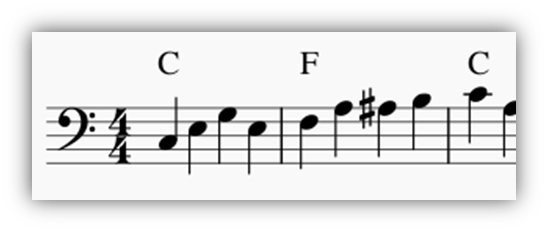
The F and A are in the chord, but the A# and B aren’t. However, they sound good because they “walk” up chromatically in the same direction towards the C on the first beat of the next chord.
Of course, that’s just one example of how to walk from the C to the F and back to the C. There are myriad possibilities. The point is to keep the bottom end moving, a lot like basso continuo from Baroque music.
This sort of walking bass part can be composed. But it’s more likely that the bassist is improvising, keeping the tempo steady while picking notes that outline the current chord and lead the band to the root of the next chord. It’s leading from below.
One more thing about the bass part:
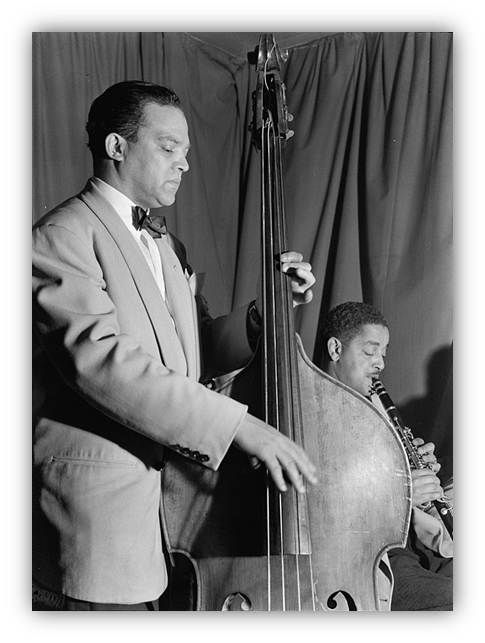
It was played by an upright bass, not a tuba as in earlier Jazz. That meant the player didn’t need time to inhale. He could play endless quarter notes. The drummer often played those same quarter notes on the bass drum.
It’s called a “four on the floor” beat.
Swing also emphasized call-and-response. This came from the African American spirituals of the post-Civil War 1800s. Trad Jazz incorporated it, though mostly the call part was written and the response was improvised. In Swing, all the parts were written. The saxes might play the call and the brass section would respond, as in Glenn Miller’s famous “In The Mood.”
Even with all its written parts, swing has jazz’s hankering for experimentation.

Jazz is musician’s music, despite its beginning in trying to keep saloon and brothel patrons spending money. It exists to show off musicians’ talents and personalities.
Whether it’s a bassist’s solid, reliable, and constantly moving foundation or a saxophonist’s creative solo flight of fancy, Swing is every bit as innovative and improvised as any other era of Jazz.
So how did this all happen?
After Storyville was shuttered, many Jazz players moved north. Louis Armstrong was one of the many who landed in Chicago.

He was still young but made a name for himself as a great trumpet player, a charismatic showman, and an engaging vocalist.
His voice became rough and gravely after a severe cold in 1921, and surgeries meant to fix it in 1936 and ‘37 only made it worse. It didn’t stop him from singing though, and that harsh voice became one of his trademarks.
In 1924, bandleader Fletcher Henderson invited him to join his band in New York.

Henderson had studied for his Masters degree in chemistry but realized there would be few opportunities for a black chemist in the United States. He gave up science and put his intellect to work in music.
He was a good arranger and hired sax player Don Redman to arrange for his band, too. He also hired Armstrong to, well, be Armstrong. This was the first inkling of Swing as something separate from Trad Jazz.
It was also where the genre gets its name.
Henderson told his band that Armstrong was coming to join the band and that, “This cat can swing.”
Indeed he could. He only stayed in New York for a year, but every player who heard him tried to be more like him. Armstrong, Henderson, and Redman made Swing its own thing, and that helped turn Harlem into the epicenter of black economic, philosophical, and artistic advancement.
It was called the “Harlem Renaissance.”
Duke Ellington moved to New York at about the same time.

His real name was Edward but he had a noble, refined air about him even at a young age, so everyone called him Duke. Part of his polished style came from his mother insisting he dress well.
Whatever the reason, his music was as suave as his demeanor.
He put together a band and, remarkably, some of the members stayed with him for 45 years. They were hired as the house band at the Cotton Club, a Harlem venue that initially catered to white audiences. It sold alcohol during the prohibition but was closed down only once, and not for long. The club’s owner, Owney Madden, was a bootlegger and gangster who knew which palms to grease.
This is something to remember:
Music grows in new directions when allowed to, and the places that allow it to grow are often run by gangsters, shysters, and ne’er do wells.
If you want to hear exciting new music, go somewhere you wouldn’t take your mother.
Cool SON-IN-LAW Bill Bois
Having said that, I did take my mother-in-law to CBGB.

Anyway, while many white audiences expected “jungle music” from the Cotton Club’s black entertainers, Ellington won an enthusiastic audience with sophisticated songs like “Mood Indigo,” “Three Little Words,” and “Take the A Train.”

This last song was written by pianist Billy Strayhorn, based on the directions Ellington gave him for getting to his home by subway.
The Cotton Club had a weekly, nationally broadcast radio show. With Ellington leading the house band, his music earned widespread admiration, and he had charting records from 1927 to 1954.
Swing was the music of black self-expression and was loved by white audiences, and a big part of that crossover appeal was dancing.
Whites danced the Charleston through the 1920s.

Blacks adapted it for Swing, and called it the Lindy Hop. Then whites adapted the Lindy Hop into the Jitterbug. Through all of it, older folks thought the world was going to hell in a handbasket.
In that regard, Swing was no different than any other new genre.
Many musicians were put out of work when the Depression hit in 1929. If people were low on cash, they wouldn’t spend what they had at expensive nightclubs. Fletcher Henderson was so broke he had to break up his band and sell his arrangements.
Some of them were purchased by Benny Goodman: A clarinetist who had moved to New York as a session player. He wanted to put his own band together and needed material.

So, in addition to buying the arrangements, he hired Henderson and some of his band members. This is one of the first integrated big bands.
NBC Radio hired Goodman and company to be one of the bands on a national show called Let’s Dance. The other two bands, led by Kel Murray and Xaviar Cugat, were mellower, so Goodman’s Swing got people’s attention.
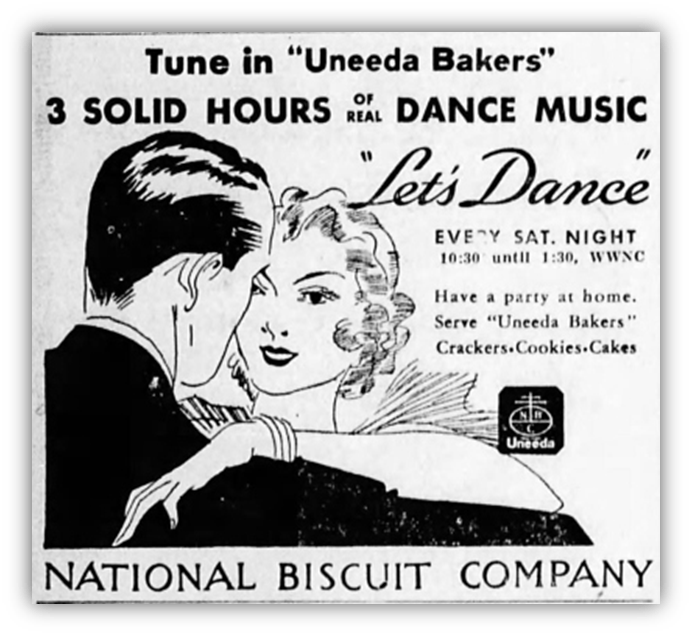
Let’s Dance was sponsored by Nabisco. Their workers went on strike in 1935 and the company struggled financially. They ended all their sponsorships and Let’s Dance came to an end.
That left Goodman with little income and a band to pay. A cross country tour was quickly arranged. It didn’t go well.
This has nothing to do with the tour not going well:
It’s worth noting that while Goodman’s band was integrated, he took only white players on the road. He wanted to avoid problems in certain cities. It was the United States in 1935. As we know, Dick Clark’s Caravan Of Stars experienced some of those problems, even 24 years later.
They didn’t have the money to rent a bus so they piled into their own cars and drove themselves. When people saw that a “Dance Band” was coming to play in their town, they expected waltzes, not fast tempos and four on the floor beats.

In Denver, some people even asked for their money back. Goodman had to change their set to please the people, which displeased him and his players.
They were certain their three week booking at the Palomar in Los Angeles would be the end of the band. But when they arrived, there was a crowd waiting outside the venue. The discouraged Goodman was sure the line of people were there for someone else.
So the first set they played was slow waltzes and mellow tunes, like what they had been asked for across the country. The audience didn’t respond.

During the break, drummer Gene Kupra said, “If we’re gonna die, Benny, let’s die playing our own thing.”
So they played the Swing they wanted to play, and it was exactly what the audience wanted, too. Their joyous reaction was described as “pandemonium.”
The Palomar stint saved Goodman’s career. Many of his players, Krupa included, became stars in their own right.
One thing that made the difference was Los Angeles received the Let’s Dance broadcast earlier in the evening, so more people knew Goodman’s music.

Also, while Let’s Dance may have been some cities’ only exposure to Swing, a DJ on KFWB, Al Jarvis, had been playing Swing records, including Goodman’s. The LA crowd didn’t have to be convinced to like Swing. They already did.
New York and Los Angeles loved Swing. It wasn’t long before the rest of the country did, too.
Stay tuned for Part 2.
Suggested Listening – Full YouTube Playlist

Prince Of Wails
Fletcher Henderson And His Orchestra
1924
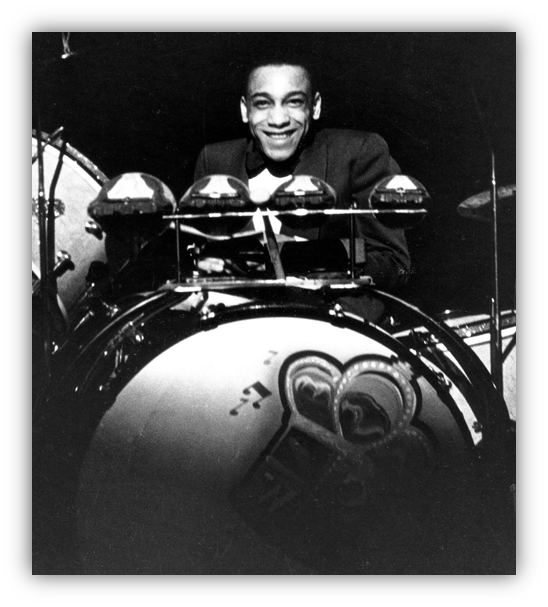
Stompin’ At The Savoy
Chick Webb And His Orchestra
1934

King Porter Stomp
Benny Goodman
1935

Rhythm Is Our Business
Jimmie Lunceford And His Orchestra
1936

One O’Clock Jump
Count Basie And His Orchestra
1937
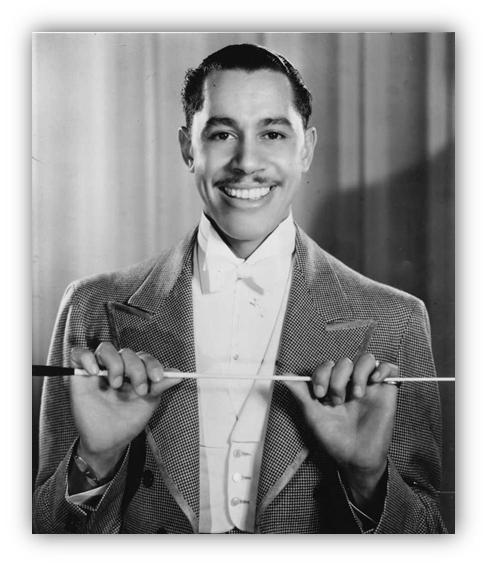
Some Of These Days
Cab Calloway
1937

Woodchopper’s Ball
Woody Herman And His Orchestra
1939

Cherokee
Charlie Barnet And His Orchestra
1939
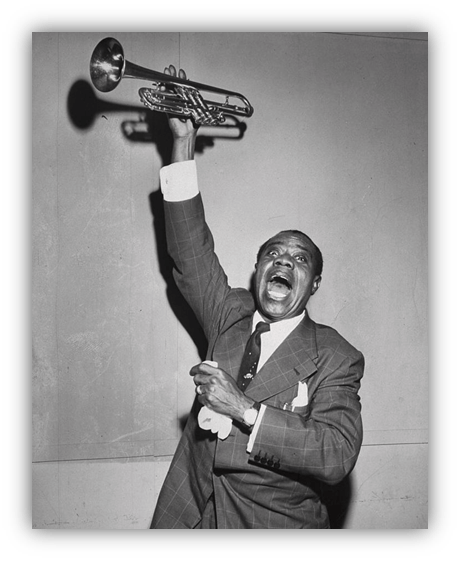
What Is This Thing Called Swing?
Louis Armstrong
1939

In The Mood
The Glenn Miller Orchestra
1941


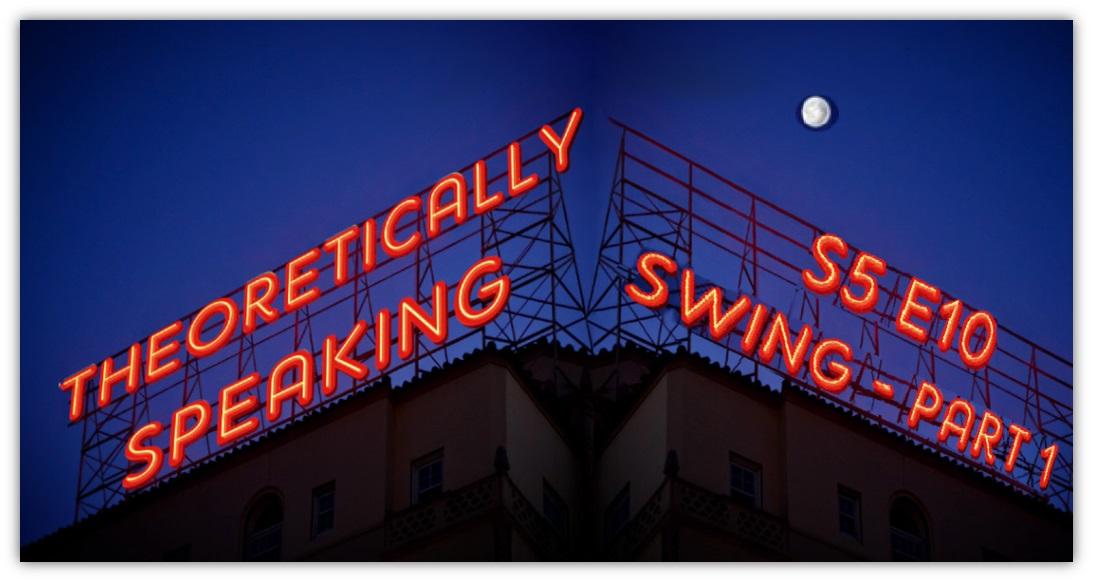

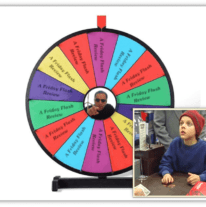
I’m pretty sure I’ll be humming “It Don’t Mean a Thing” all weekend … Great job!
Side note on your side note: I take it you listened to Chris Molanphy’s “Hit Parade” piece last month on CBGB’s?
I haven’t but you’ve piqued my interest. 🙂
Lol, not only is there overlap with my previous jazz article (which I believe you had alluded to back then), there’s a good deal more overlap with one coming up soon!
Even so, they’re still distinct circles in a Venn diagram. Different beasts, despite some common traits.
And, as always, you have that knack for describing what’s going on musically. Always a joy to learn a bit more!
I’m more and more convinced we were separated at birth.
That would make us triplets, actually.
Really? I’m the long lost third? Tell your twin I’m coming home!
It’s also amazing at how close to the Billboard charts many of these swing bands/orchestras from the 30s got! I mean, Tommy Dorsey’s Orchestra had a #8 hit in 1958!
(he had been dead for 2 years, but still!)
There’s a research topic for you. We know there are plenty of posthumous #1s, but who had been dead the longest before getting their first #1?
Within the Billboard era?
there’s been 7 posthumous #1 artists (I think 5 as lead artists), Soulja Slim hit #1 with Juvenile 9 months after he passed, the latest on the Billboard 100.
For lead artists, it was Biggie with “Mo Money Mo Problems”, 6 months after his death.
In the UK, there have been a number who hit years/decades after their death. Elvis, for instance, hit #1 in 2002 with JXL after “A Little Less Conversation” was used in a series of promos for the 2002 World Cup.
Could The Beatles make that leap?
Wow, I didn’t expect such a quick reply, but The Beatles having one more #1 would be a beautiful thing. I hadn’t considered it and don’t think it’ll happen, but it’d be a good tribute to John and George.
I can’t imagine “Now and Then” going to #1 unless something really connected it to youth. But an extra chart topper would be a welcome cushion to make it less likely that Mariah could match their record.
I don’t mind Mariah’s matching as long as what does it isn’t seasonal or sleaze-onal.
Maybe Nicki Minaj can rap during the bridge on its remix.
Oh boy…
“Hold my beer.”
– Bill Wardlow
If its longest before having a posthumous #1, thegue is correct that Elvis has the longest time from death to chart topper. He did top the charts in 2002 with A Little Less Conversation but he outdid that three times in 2005. There was a big re-release push that year and Jailhouse Rock, One Night and Its Now Or Never all reached #1 in January and February of 2005. Even more astounding is that from January to April his label released a single a week for 16 weeks and as well as the 3 #1s, there were 8 #2s, 3 #3s, a #4 and a #5.
For the longest posthumous wait for their first UK #1 it’s Eva Cassidy’s version of What A Wonderful World. Died in November 1996 and topped the chart in December 2007.
I always liked big band music in general. I liked the concept of it more than actually liking it, because I knew my mom liked it. Eventually, as I collected more pre-rock era #1s, I forced myself to listen to a lot of that stuff more and more. It really has been a slow change, but by now I am just as happy to hear music from the 30s as I am any other music. Pre-30s music gets gradually harder for me to enjoy.
But I really love a lot of big band stuff. These articles from you and Phylum have been great.
It might be easier if the recording quality were better. Maybe someone will use The Beatles AI to clean up those old records.
Colorizing my movies??? How dare you!
Edna looks the most punk of all, next to those poseurs.
I’m definitely down for some Benny Goodman, Count Basie, Satchmo, Gene Krupa (this era gave us some amazing drummers — Chick Webb, Art Blakey, Buddy Rich, to name a few). But it’s the next era of jazz that’s my wheelhouse. Looking forward to it!
This is a really thorough job on a genre with a daunting amount of backstory to cover. A great read. There is a lot to discuss here, but I’ll simply say that among many other things, I enjoyed seeing the Gene Krupa reference and I highly recommend the 1959 film The Gene Krupa Story, starring Sal Mineo, if anyone hasn’t seen it.